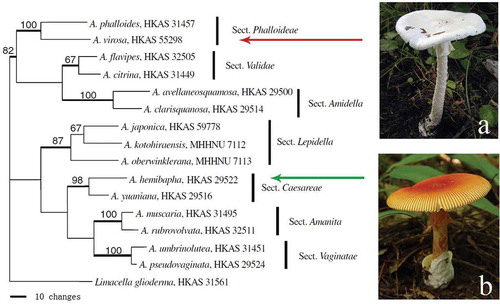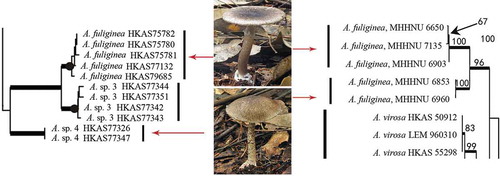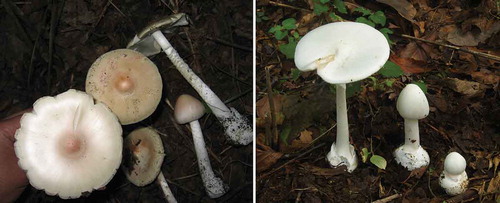Figures & data
Figure 1. Phylogenetic position of a lethal species, A. virosa (a), and an edible species, A. hemibapha (b), in a most parsimonious tree of genus Amanita based on nuclear large subunit (nLSU) sequences (Zhang et al. Citation2010).

Figure 2. Two sub-clades of A. fuliginea in two phylogenetic trees (parcel) of Amanita based on ITS sequences (left: Cai et al. Citation2014; right: Zhang et al. Citation2010). Amanita sp. 4 in left tree is corresponding to A. fuliginea MHHNU 6853 and 6960 in right tree.

Figure 4. Torrendia and Amanita in a phylogenetic tree based on nLSU sequences (Justo et al. Citation2010).


